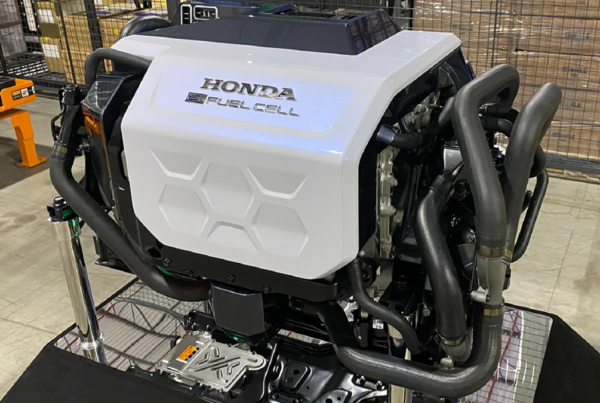
- Signs Letter of intent with OCI N.V.’s production facility BioMCN on the supply of green hydrogen
- RWE intends to supply OCI N.V.’s production facility BioMCN and Evonik with green hydrogen
RWE’s innovative electrolysis project Eemshydrogen enters the next phase
RWE is developing Eemshydrogen, an innovative project for green hydrogen production at Eemshaven, to demonstrate the feasibility of an integrated hydrogen value chain with vast scaling potential. To contribute to the economic viability of the project, RWE has now signed a letter of intent with OCI N.V.’s production facility BioMCN on the supply of green hydrogen in the future. In addition, RWE intends to provide green hydrogen to Evonik. Both companies in Delfzijl plan to use the green hydrogen in their business processes for making sustainable products. The amount of green hydrogen that RWE will supply to both companies is under evaluation. The conclusion of the agreements is a next step for RWE in the development and realisation of a 50 megawatts electrolyser, directly connected to RWE’s Westereems onshore wind farm in Eemshaven with an installed capacity of 162 MW.
Roger Miesen, CEO RWE Generation said, “Green hydrogen offers huge potential for the energy transition and for RWE, as well. We have the know-how and the renewables plants to produce green hydrogen ourselves. And thanks to our energy trading unit, we can operate electrolysers optimally in line with market’s requirements. Hydrogen plays an important role for the decarbonisation of the industry sector, as not all industrial production processes are suitable for electrification. It is important to get the hydrogen economy moving quickly for the Netherlands and Europe to keep the competitive advantage in the global market place. RWE are determined to play an active part in creating a hydrogen economy.”
Eemshydrogen is part of the necessary development of scaling up and cost reduction in the production of green hydrogen. The project contributes to the broad investment agenda of the Northern Netherlands for hydrogen, including users in various sectors, infrastructure and large-scale storage. BioMCN, for example, plans to use green hydrogen to produce green methanol, which can be used as a green raw material for chemistry or as an alternative renewable fuel in transport.
About Eemshydrogen
To explore innovations in the hydrogen area RWE started a feasibility study in 2019 aimed at producing green hydrogen in Eemshaven. The resulting Eemshydrogen project is comprised of, in the first phase, the development and realisation of a 50 MW electrolyser in Eemshaven with a direct connection to RWE’s Westereems onshore wind farm. Depending on market developments and regulations, the electrolysis capacity can be further scaled up. The green hydrogen produced by the installation can yield more than 250,000 tons of CO2 savings over the project’s lifetime. RWE alongside developers of electrolysers, are evaluating technical options for producing hydrogen in a flexible way, linked to intermittent wind power generation. A final investment decision for the project is expected to be taken in 2021, production of green hydrogen could start in 2024. Furthermore, the Eemshydrogen project contributes to the development of a hydrogen infrastructure in Northern Netherlands by enabling the conversion of electric power into hydrogen. The produced hydrogen can be stored, transported and made available to industrial customers. In addition, the production of hydrogen can contribute to limiting congestion in the electricity network.
RWE active player on hydrogen
In addition to Eemshydrogen, RWE in Germany is working on, among other things, the GET H2 project. This aims to build up the entire hydrogen value chain. In addition, RWE has become a member of the AquaVentus project off the coast of Heligoland in the German North Sea, a concept for the production of hydrogen using offshore wind, with the island as a central hub. RWE’s offshore wind farms on site – Nordsee Ost, Amrumbank West and in the future Kaskasi– are ideal for this. In other countries where RWE is active, options are also being explored. In the United Kingdom, for example, RWE is looking at how hydrogen infrastructures can be used together with partners in the large industrial clusters.
Read the most up to date Fuel Cell and Hydrogen Industry news at FuelCellsWorks




